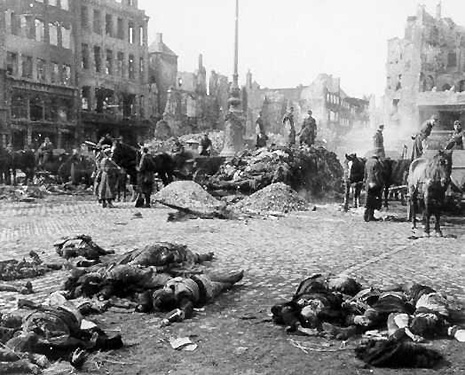Guernica, 1937 by Pablo Picasso.
A very large painting arrived in London on September 30, 1938, the very day British Prime Minister Neville Chamberlain signed the Munich Agreement with the Axis Powers. It had previously been exhibited at the 1937 Paris International Exhibition (World’s Fair) in the exhibit of the Spanish Republic. It had created a sensation and was soon sent on a world tour to raise support for the Republican cause in the devastating Civil War wracking that country. This is the story of that painting which became perhaps the artistic symbol of an entire bloody century.
On April 26, 1937 aircraft of the German Condor Legion and supporting Italian forces unleashed a two hour aerial bombardment of the Spanish Basque market town of Guernica. The Nazi and Fascist “volunteers” were supporting the so-called Loyalist forces of General Fredrico Franco against the Republicans, a loose alliance of anarcho-syndicalist unionists, Social Democrats, Communists, democrats, and Basque Nationalists in the Spanish Civil War.
In addition to supporting a fellow Fascist, the Germans and Italians viewed the war as a laboratory to test new weapons and tactics. Guernica, a civilian population center without direct military value, was targeted because it was a cultural center of the Basque region, which was firmly on the Republican side of the war. The aim was to terrorize and demoralize the population that supported troops in the field.
Guernica after the bombing.
The bombing commenced about 4:30 PM on a Monday. The first wave of planes hit bridges and roads leading in and out of the city. General Wolfram von Richthofen, commander of the Condors, reported heavy smoke shrouded the city when flights of heavy Junker bombers came over obscuring targets, so the planes simply dumped their bombs on the center of the city, destroying most of the homes and buildings there. Subsequent waves dropped incendiaries creating an inferno, which he officially reported “resulted in complete annihilation,” of anyone below.
He claimed, however, that most residents were out of town because of a holiday or had time to flee. Reports on the ground contradict that claim. Many residents were in the center of town for a market day when the attack began and were unable to flee because the bridges were destroyed and the roads blocked with rubble.
The dead in the Market after the Nazi air raid.
The attack was the first systematic aerial attack in force on a civilian population center. Similar attacks behind the lines of opposing armies would become a standard tactic of the Nazi blitzkrieg of World War II.
The fate of the town became an international cause célèbre. Spanish-born painter Pablo Picasso was working in Paris on a commission from the Republican government for the 1937 Paris International Exhibition. He scrapped original plans and began sketching a mammoth mural commemorating the raid on Guernica. The 11 foot by 25½ foot painting in stark black, white, and gray captured the horror of the raid in a Cubist style—a screaming woman leans from a window with an oil lamp, an injured horse whinnies in pain, a mother clasps her dead infant.
After the victory of Franco’s forces, the painting was sent to the United States at Picasso’s request. It formed the centerpiece of a Picasso exhibition at New York’s Museum of Modern Art (MoMA.) During and after the war it was shown across the U.S., in Latin America, and Europe before returning to the MoMA for another Picasso retrospective, where it stayed until 1981.
Picasso’s will had stipulated that the painting could not be displayed in Spain until it was rid of the fascist dictatorship and restored to a Republic. He also stipulated that once returned it must be exhibited in the national art gallery, the Museo del Prado in Madrid. After Franco died in 1978, ten years after Picasso, the reluctant MoMA finally allowed the painting to be sent to the Prado in 1981.
In 1992 it was moved to Museo Nacional Centro de Arte Reina Sofía along with most of the rest of the Prado’s Twentieth Century collection. It can be seen there today.
Guernica, the town and the painting, remain potent symbols of modern war’s brutality. The painting was often used by Vietnam protestors. A tapestry reproduction hung for years at the United Nations in New York at the entrance of the Security Council Room.
Photos of Secretary of State Colin Powell speaking in front of the covered Guernica tapestry in the United Nations Security Council are perhaps not so mysteriously hard to find. This painting literally pulls back the curtain on the hypocrisy.
In February 2003, as the United States was about to launch its Shock and Awe air bombardment of Bagdad, the tapestry was covered by a curtain to prevent embarrassment to Secretary of State Colin Powell as he laid out the case for war against Iraq. In 2009 the tapestry was permanently removed from display at the United Nations and sent to London’s Whitechapel Galley occupying the same space where the painting was displayed in 1939.






